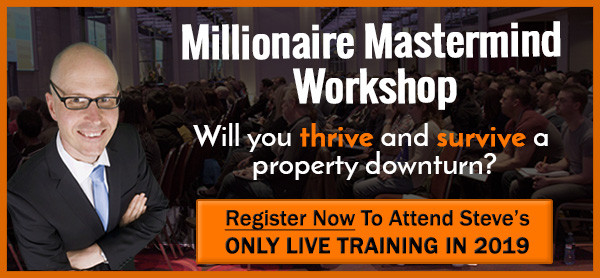All Topics / Help Needed! / Becoming financially free
Hey guys 👋, just read 0-130 in 3.5years
And honestly have so many questions haha
so basically in the positive cashflow section he explains how he divides his profit into 1/3 adding it to shares and things like that but from his example you make $50 a week you only receive $16 from the way he described it so am I needing to own 50properties to earn over $1000 a week?
because capital gains and lump sums ain’t certain how else would he be earning so much passive income
I know it sounds stupid but I’m studying as much as possible just can’t get my head around certain things?
TIA
Hi Big Lachie,
From your words, I suspect you’ve got to page 100 or so, but perhaps not much more yet? I see where you read the part about “thirds” – it is between pages 92 and 100 – or thereabouts. Did you spend time on the other two “thirds” though, and what each of them does for you? ‘cos it is all about the whole picture. Steve used the “thirds” to good purpose – but perhaps it might be that things can work better (for you) by utilising ALL of the postive income in just one area rather than three? But to round out Steve’s idea of thirds, let’s take a bit longer look at them:-
One example of what the second third can do is told in later chapters – see p235 for Vendor finance and how that can lead to a lot more income over time, OR indeed a lump sum equity jump instead (depending on how things go for the purchaser). Either way, the investor (you) is covered – via income or equity. Note too though, that Steve’s earliest purchases used that system as it worked well with inexpensive properties. Even then it only worked in a small number of areas – Steve needed to change his focal point once that area (Ballarat) values grew too high to use that system.
Steve talks of “Multiplication by Division” too (see p49) – revisit those pages to see how he was able to recoup “lazy equity” by selling one to enable him to buy two more. That’s another way to increase BOTH your income and your equity (capital).
And then (on page 99) he talks of using shares for capital gains (as one can make money whether share values are rising or falling). In the end then, do you need 50 properties? Maybe – maybe not – it is all about “how you choose to structure your investing”. From what I can see, Steve’s way is a patient, sure way where you walk the path to financial freedom. Not a sprint, but more a marathon.
There is a lot to it, Lachie – do come back with more questions as you go – I hope the above helps in some way, :)
Benny
Hi Benny,
yes I’ve read all this only reason I was a bit confused was the fact of your doing like quick lump sums like Reno’s it’s in my eyes not passive and the equity side isn’t certain but I totally understand that you do all of these was just thinking about how there’s enough positive income to be financially free.
so aswell as renting out I try pick up properties for Reno’s or vendors finance etc etc?
im super keen to start and just trying to gain as much knowledge as possible
thanks for getting back so quickly
Hi again,
I hear you, and yes, your questions make sense – Steve mentions two phases – accumulation, then consolidation. As I understand it, the accumulation phase is where you go “all out” to gain equity that you can then convert into Income down the track. Steve makes the point that Commercial Properties give a better yield (Income) than residential, so he talks of building your equity with residential properties first. Once you have the equity you need, use it to buy Commercial that then throws off extra cash so you can leave your job.
But beware, those few words are the nutshell – there is far more to it than just that, and of course, you might need to have a high income to be able to grow your equity. So, yes, you might need to buy 50 properties – or just 16 (see a story that comes from the topic called “The big picture” – about a young bloke who wanted to accumulate quickly) :-
One line from that link is this – “He created rental incomes of $200k in 2 to 3 years”. That was gross income, but hey, there was a lot left over for him (to buy more, or simply to live). He posted later to tell us where he is now…..
You’ll be able to access the whole “big picture” topic from there too. Or look for it in the Welcome PM you received. There are a host of other ideas in that link,
Benny
Hey Benny,
legend exactly the answer I was looking for thanks for the quick replied and any advice or knowledge would be much appreciated
cheers
You must be logged in to reply to this topic. If you don't have an account, you can register here.






